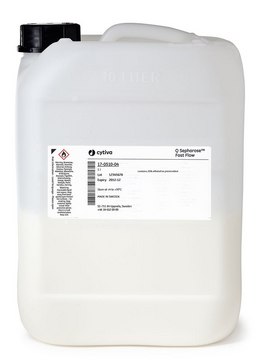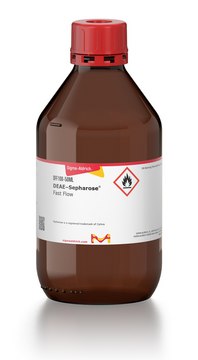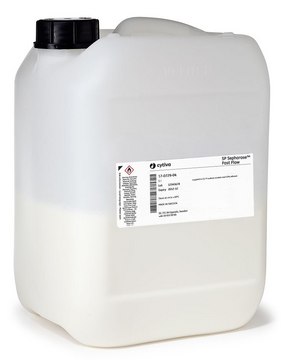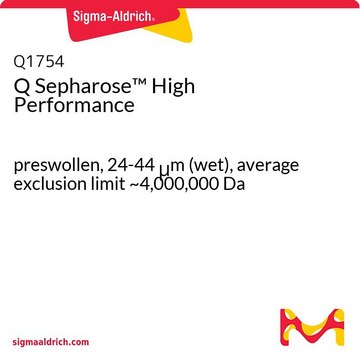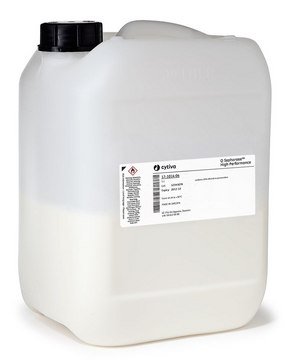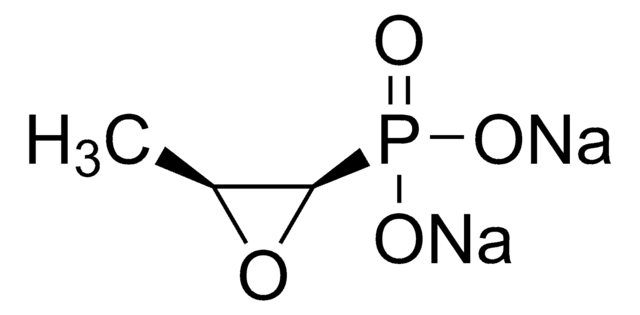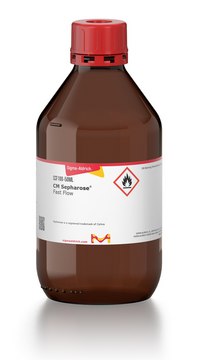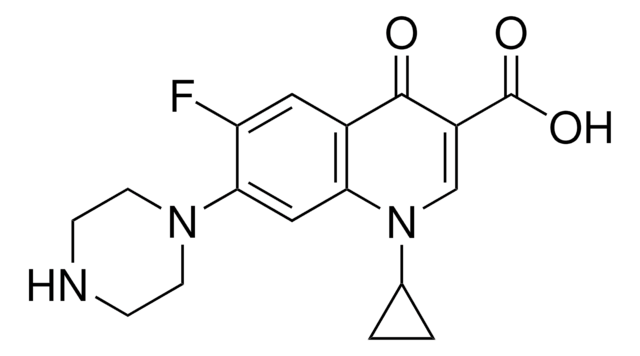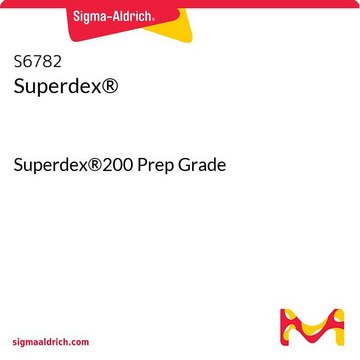Q1126
Q Sepharose™ Fast Flow
preswollen, 45-165 μm (wet), exclusion limit ~4,000,000 Da
Synonym(s):
Q Sepharose™
Sign Into View Organizational & Contract Pricing
All Photos(1)
About This Item
Recommended Products
form
preswollen
Quality Level
technique(s)
RNA extraction: suitable
particle size
45-165 μm (wet)
pore size
~4,000,000 Da exclusion limit
capacity
0.18-0.24 mmol Cl-/mL, packed gel
storage temp.
2-8°C
Looking for similar products? Visit Product Comparison Guide
General description
−Ο−CH2CHOHCH2OCH2CHOHCH2N+(CH3)3
Application
Q Sepharose™ is used in protein chromatography, ion exchange chromatography and anion exchange media. Q Sepharose™ has been used to study compounds of plant defense with applications for natural control of phytopathogenic fungi. Q Sepharose™has also been used to develop an efficient method for extracting high-quality mRNA from soil and to study the immunomodulatory proteins from garlic (Allium sativum).
Physical form
Preswollen in 20% ethanol
Legal Information
Sepharose is a trademark of Cytiva
Signal Word
Warning
Hazard Statements
Precautionary Statements
Hazard Classifications
Flam. Liq. 3
Storage Class Code
3 - Flammable liquids
WGK
WGK 1
Flash Point(F)
100.4 - 109.4 °F - closed cup
Flash Point(C)
38 - 43 °C - closed cup
Personal Protective Equipment
dust mask type N95 (US), Eyeshields, Gloves
Choose from one of the most recent versions:
Already Own This Product?
Find documentation for the products that you have recently purchased in the Document Library.
Shikimate dehydrogenase from pepper (<I>Capsicum annuum</I>) seedlings. Purification and properties.
Diaz, J., and Merino, F.
Physiologia Plantarum, 100(1), 147-152 (1997)
Fatima Clement et al.
International immunopharmacology, 10(3), 316-324 (2009-12-17)
Garlic (Allium sativum), an important medicinal spice, displays a plethora of biological effects including immunomodulation. Although some immunomodulatory proteins from garlic have been described, their identities are still unknown. The present study was envisaged to isolate immunomodulatory proteins from raw
Suzana M Ribeiro et al.
Peptides, 32(5), 868-874 (2010-10-20)
Antifungal proteins and peptides, essential compounds for plant defense, have been isolated from several tissues of various plants. These proteins could be used as a natural alternative to control phytopathogenic fungi. In this report a heterodimeric antifungal protein named Pa-AFP1
Irini Bournazou et al.
The Journal of clinical investigation, 119(1), 20-32 (2008-11-27)
Apoptosis is a noninflammatory, programmed form of cell death. One mechanism underlying the non-phlogistic nature of the apoptosis program is the swift phagocytosis of the dying cells. How apoptotic cells attract mononuclear phagocytes and not granulocytes, the professional phagocytes that
E G Campos et al.
International journal for parasitology, 29(5), 655-662 (1999-07-15)
Cytochrome c peroxidase oxidises hydrogen peroxide using cytochrome c as the electron donor. This enzyme is found in yeast and bacteria and has been also described in the trematodes Fasciola hepatica and Schistosoma mansoni. Using partially purified cytochrome c peroxidase
Our team of scientists has experience in all areas of research including Life Science, Material Science, Chemical Synthesis, Chromatography, Analytical and many others.
Contact Technical Service